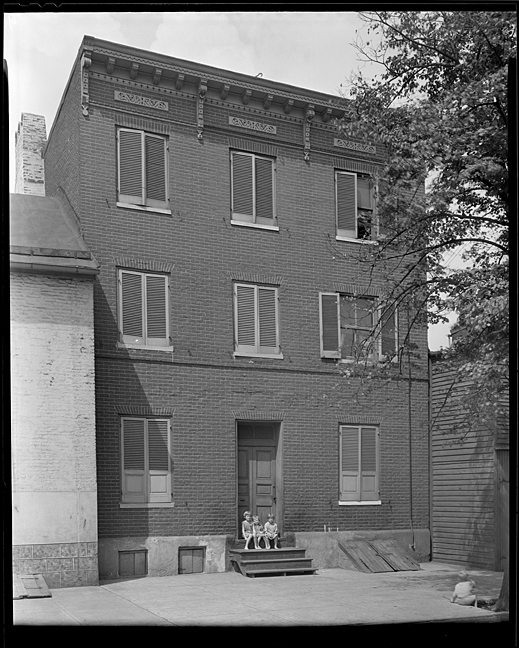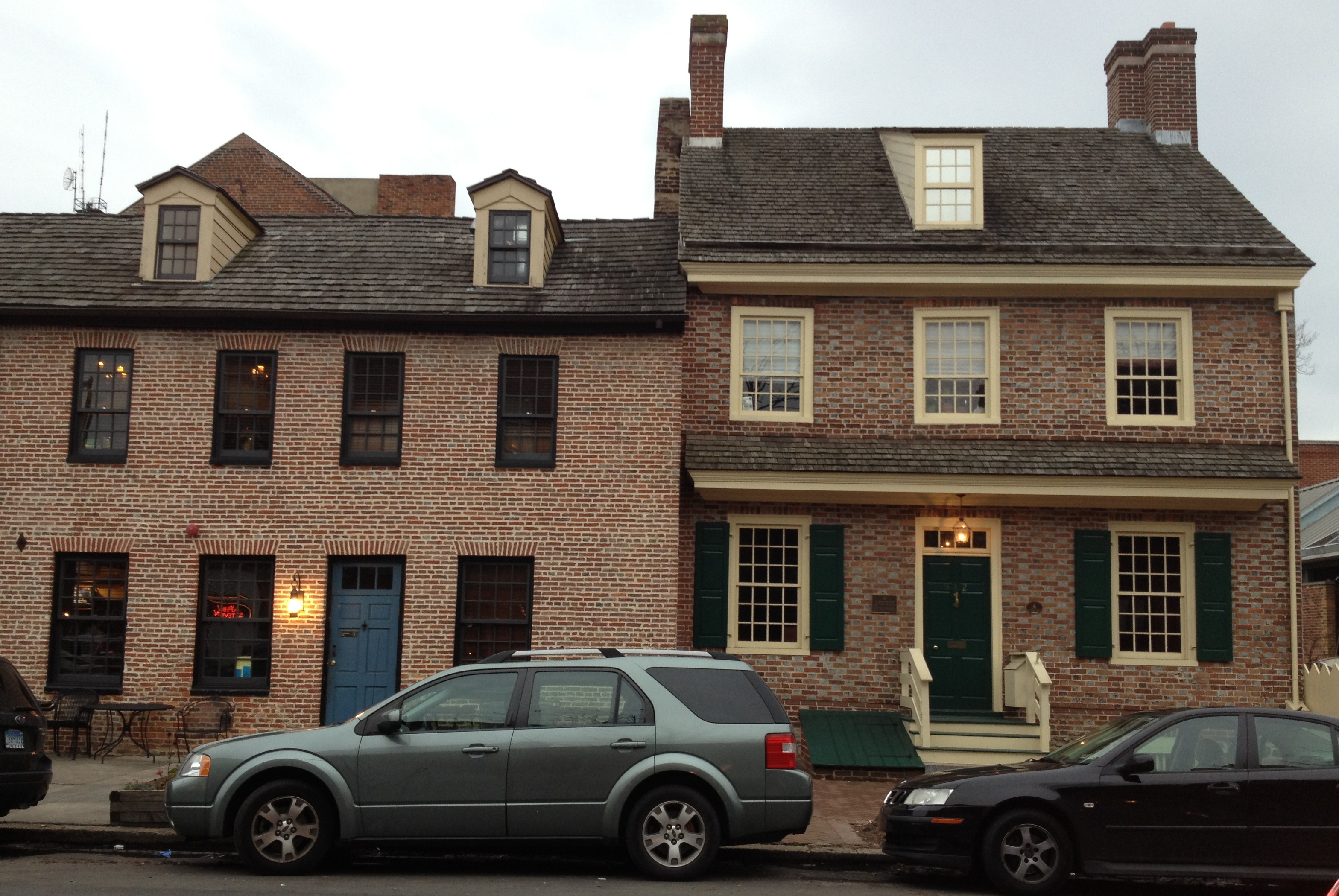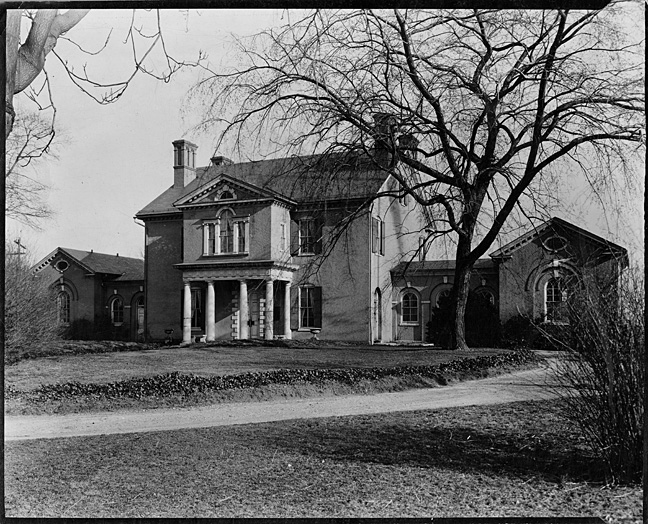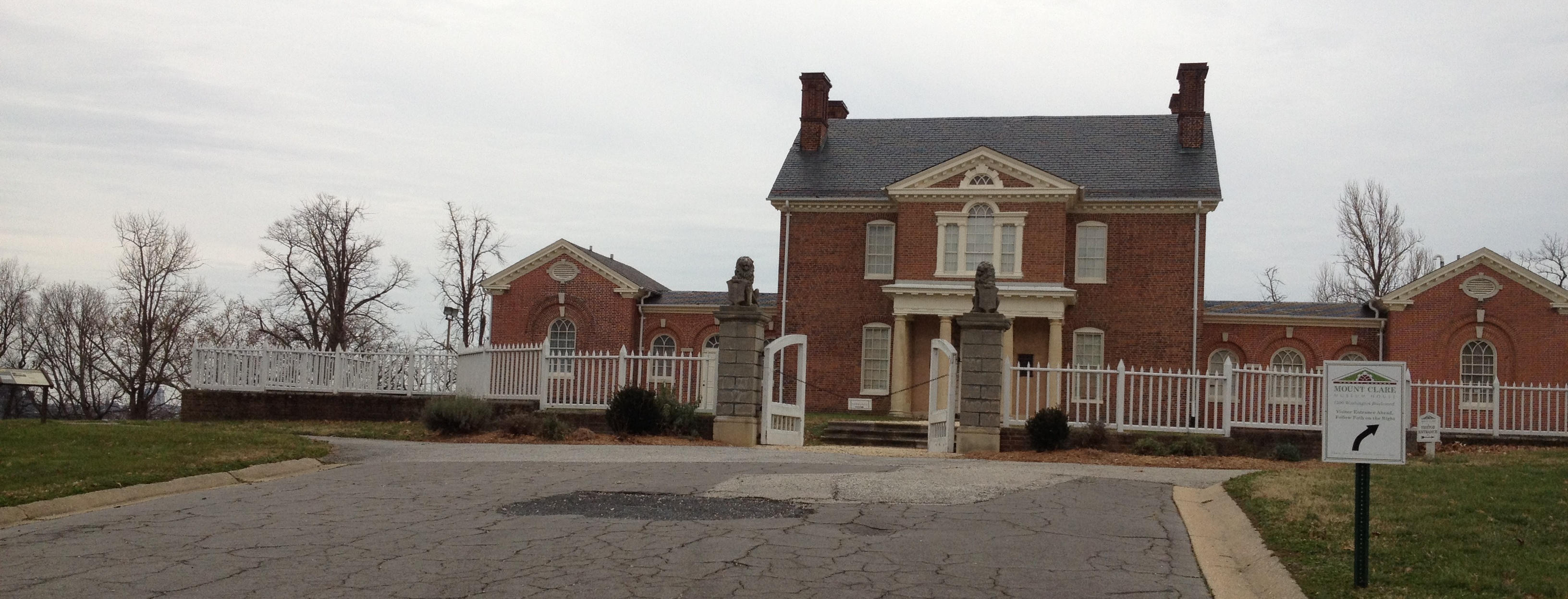This Old(est) House
Half a block north of where Fell, Thames, and Ann Streets intersect just east of the heart of Fell’s Point, stands a nondescript rowhouse that, at first glance, has little to distinguish it from the other brick rowhouses in the neighborhood. But a closer look at 812 South Ann Street reveals a front facade that is noticeably different from its neighbors. Named for its builder and first resident, the Robert Long House, completed circa 1765, is the oldest surviving residence in Baltimore.
But wait, less than three miles to the west stands another seemingly out of place structure and candidate for oldest residence in Baltimore, the Mount Clare House. An 18th century colonial mansion perched incongruously on a hill overlooking Carroll Park and the modern city now surrounding it, the Mount Clare House was built by Charles Carroll, Barrister, a delegate to the Second Continental Congress and one of Maryland’s first state senators. Sources differ on the exact time frame of the building’s construction. Some claim construction began as early as 1756; others as late as 1763, but most place the completion date around 1767.
The two properties could not be more dissimilar—one a modest rowhouse, the other a Georgian-style mansion built on what was, at the time of construction, a sprawling plantation estate of some 1000 acres. Robert Long, a merchant who hailed from York, Pennsylvania, was one of the earliest settlers of Fell’s Point (originally known as Fell’s Prospect), founded in 1730 by William Fell, an English Quaker. In 1764, Long began construction on his property on Ann Street and then apparently abandoned the project within the year. According to the Annals of Baltimore, published in 1824, it was said that Long had “persuaded Mr. Fell to lay off that part of the town, commenced some improvements at the corner of Ann and Thames Streets, moved to the country and left his building unfinished.” Long and his family soon returned though, occupying the property from 1765 to 1781.
Rather than adopting the architectural style of his newly adopted home, Long constructed the house in a style found in the southern regions of his native state, with the shed dormer and pent roof the most noticeable architectural features setting it apart from the typical Baltimore rowhouse. The house was originally built with only two floors—the third floor and attic that are seen in the circa 1930 photograph were added sometime in the mid to late 1800s. The home was set to be torn down by the City of Baltimore in 1969, until the Society for the Preservation of Federal Hill and Fell’s Point stepped in and acquired the property in 1975. The group then set about restoring the property to its original appearance. Today the group maintains its office in the residence and offers daily tours of the house and garden.
The Mount Clare House has more prosperous origins. In 1732, Dr. Charles Carroll, the father of Charles Carroll, Barrister, purchased 2,368 acres of land west of the recently established Baltimore Town. He called the property Georgia Plantation. Carroll eventually sold all but 800 acres of the original purchase to the Baltimore Iron Works, of which he was part owner. His son, Charles Carroll, Barrister, inherited the property in the late 1750s. Mount Clare was built as his summer residence, and was named in honor of his sister and grandmother.
Following Charles Carroll’s death in 1783, the estate remained in the possession of the Carroll family until 1840. Between the years 1840 to 1860 all of the original outbuildings on the plantation were destroyed, leaving only the main house remaining. During the Civil War, the house served as a quarters for Union soldiers. In 1865, a group of Germans leased the house and used it as a beer garden until 1890, when the City of Baltimore purchased the house and the remaining 70 acres of land. The city also purchased an adjoining tract of land and merged the properties into what is now Carroll Park. In 1917, the National Society of Colonial Dames in Maryland took over operations of Mount Clare and opened the site to the public as a museum. The group continues to offer tours of the home today.
So which dwelling is officially the oldest in Baltimore? Answering this question seems to be an ongoing debate, with both print and web sources yielding conflicting views. The Mount Clare House is variously described as: “the oldest colonial-era structure in Baltimore”; “the oldest extant colonial building in Baltimore”; “Baltimore’s oldest house”; “the oldest home in Baltimore City”; and “the oldest house in Baltimore City.”
The Robert Long House is billed as: “the oldest residential house in Baltimore city”; “the oldest surviving city house in Baltimore”; “the oldest existing residence in Baltimore”; “Baltimore’s oldest surviving residence”; “Baltimore’s oldest surviving urban residence”; and “the oldest standing residence in Baltimore City.” One publication goes so far as to state that the structure is the “oldest surviving urban residence within the boundaries of the original Baltimore Town,” though Baltimore Town, founded in 1729, did not amalgamate Fell’s Point until 1773. Mount Clare, on the other hand, did not become part of Baltimore City until at least 1822; a map from that year shows the western boundary of the city extending just over six blocks beyond the estate.
It seems that a distinction can be made. If the date that construction commences on a property is used as the basis for determining the age of a residence, then the Mount Clare House is the oldest. If date the house was completed is given more weight, than it’s the Robert Long House. Either way you choose to look at it, Baltimore has some pretty old houses. (Damon Talbot)
Sources and Further Reading:
Annals of Baltimore, Thomas Waters Griffith (Baltimore: W. Wooddy, 1824)
Historic Baltimore: Twelve Walking Tours of Downtown Fells Point, Locust Point, Federal Hill, and MountClare, Priscilla Miles, (Baltimore: Priscilla Miles, 1987)
Images of America: Fell’s Point, Jacqueline Greff (Charleston, SC: Arcadia Publishing, 2005)
MountClare: Being an Account of the Seat built by Charles Carroll, Barrister, upon his Lands at Patapsco, Michael F. Trostel (Baltimore: National Society of Colonial Dames of America in the State of Maryland, 1981)
The Maryland House and Garden Pilgrimage, 60th Anniversary, 1937 – 1997, Maryland House and Garden Pilgrimage, (Baltimore: Printed by Reese Press, Inc.,1997)
http://pdfhost.focus.nps.gov/docs/NHLS/Text/70000860.pdf
http://tps.cr.nps.gov/nhl/detail.cfm?ResourceId=1034&ResourceType=Building
http://www.baltimoremd.com/monuments/sea01.html
http://www.mountclare.org/index.html
http://www.nps.gov/nr//travel/baltimore/b2.htm
http://www.preservationsociety.com/PS2011robertlonghouse.html





